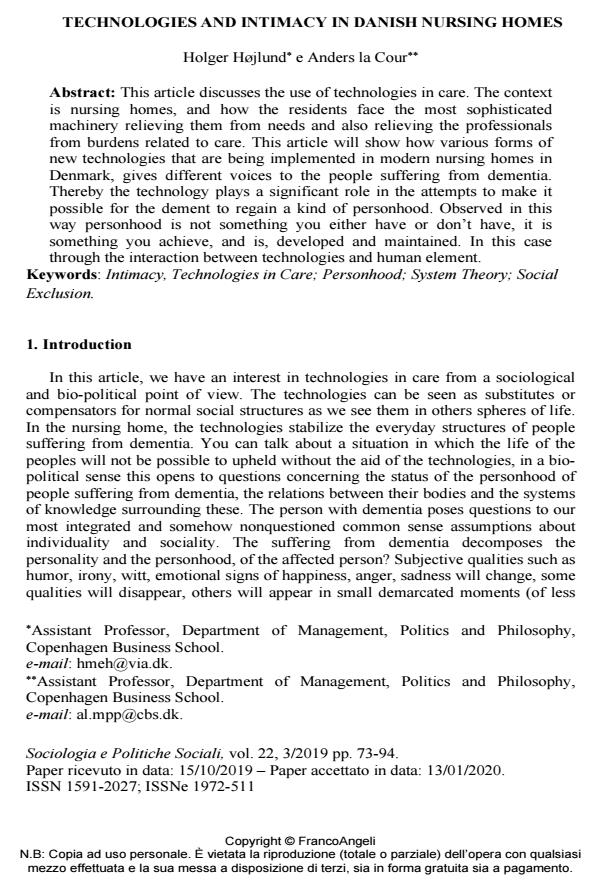Technologies and intimacy in danish nursing homes
Journal title SOCIOLOGIA E POLITICHE SOCIALI
Author/s Holger Hojlund , Anders la Cour
Publishing Year 2020 Issue 2019/3
Language English Pages 22 P. 73-94 File size 264 KB
DOI 10.3280/SP2019-003004
DOI is like a bar code for intellectual property: to have more infomation
click here
Below, you can see the article first page
If you want to buy this article in PDF format, you can do it, following the instructions to buy download credits

FrancoAngeli is member of Publishers International Linking Association, Inc (PILA), a not-for-profit association which run the CrossRef service enabling links to and from online scholarly content.
This article discusses the use of technologies in care. The context is nursing homes, and how the residents face the most sophisticated machinery relieving them from needs and also relieving the professionals from burdens related to care. This article will show how various forms of new technologies that are being implemented in modern nursing homes in Denmark, gives different voices to the people suffering from dementia. Thereby the technology plays a significant role in the attempts to make it possible for the dement to regain a kind of personhood. Observed in this way personhood is not something you either have or don’t have, it is something you achieve, and is, developed and maintained. In this case through the interaction between technologies and human element.
Keywords: Intimacy, Technologies in Care; Personhood; System Theory; Social Exclusion.
Holger Hojlund , Anders la Cour, Technologies and intimacy in danish nursing homes in "SOCIOLOGIA E POLITICHE SOCIALI" 3/2019, pp 73-94, DOI: 10.3280/SP2019-003004